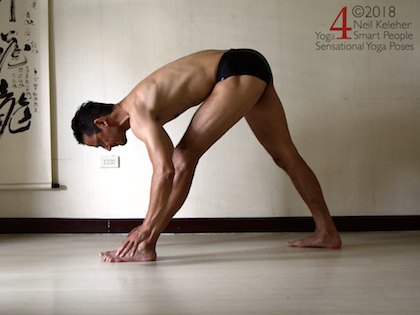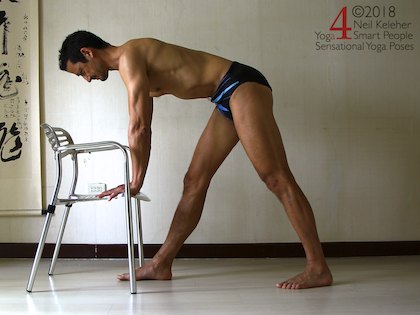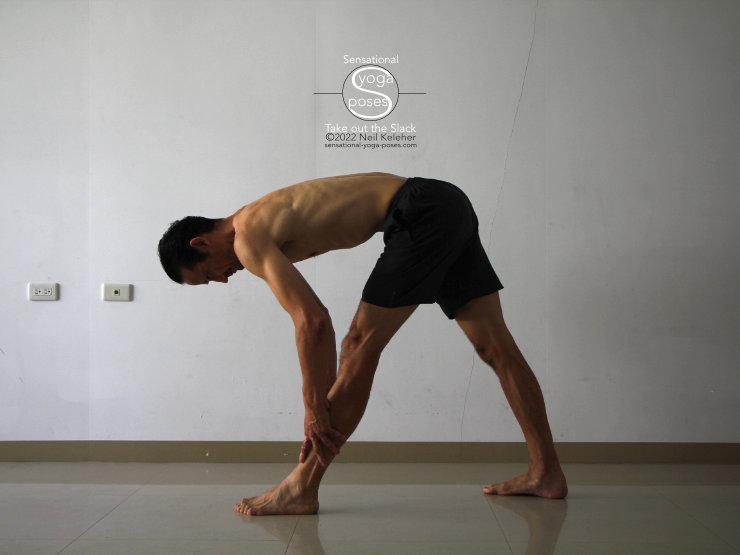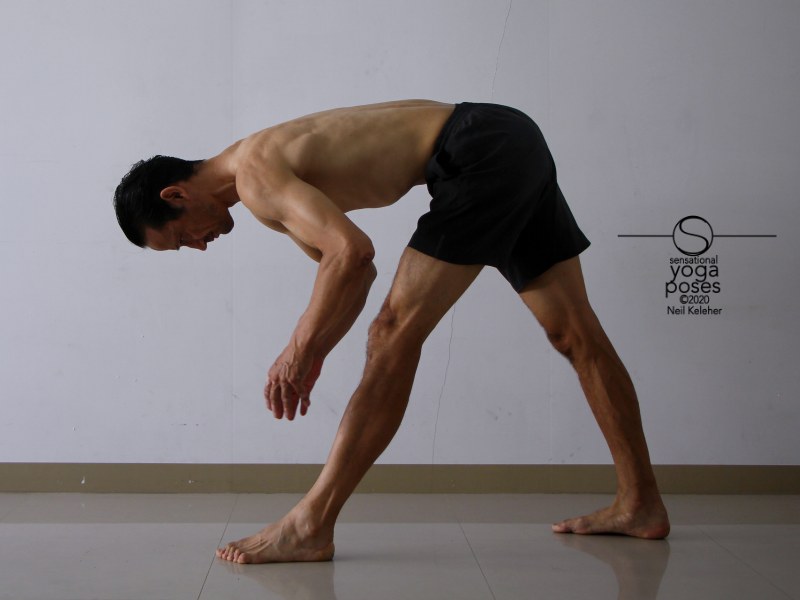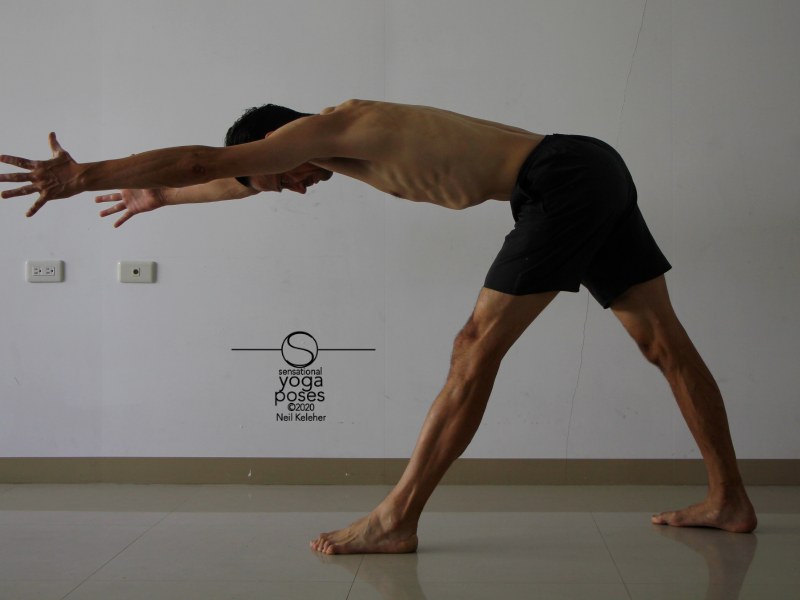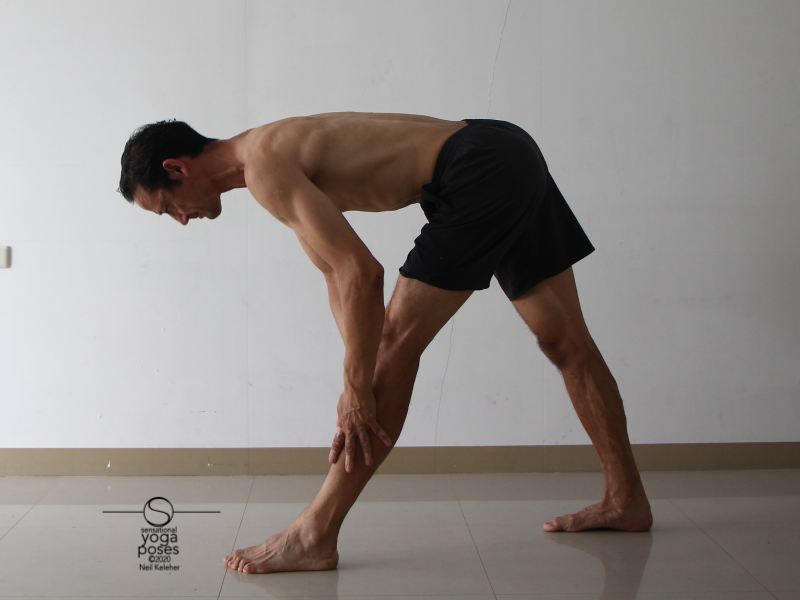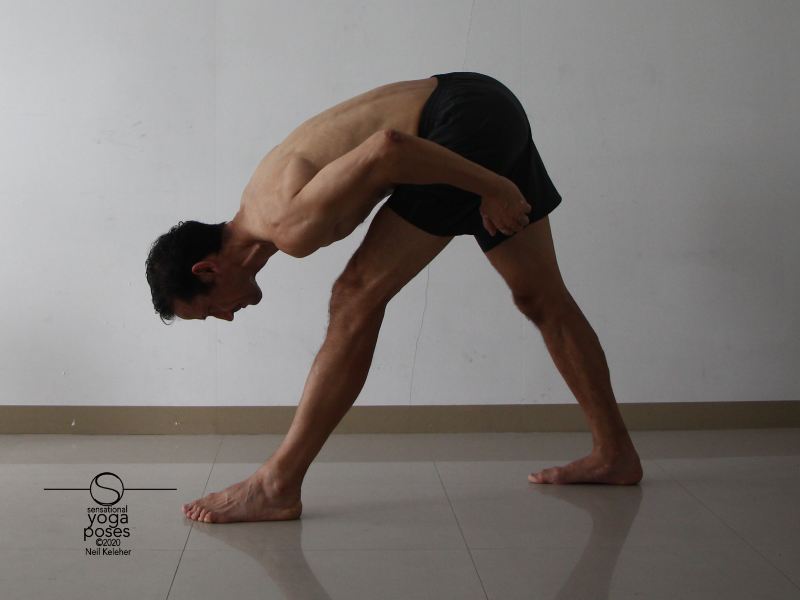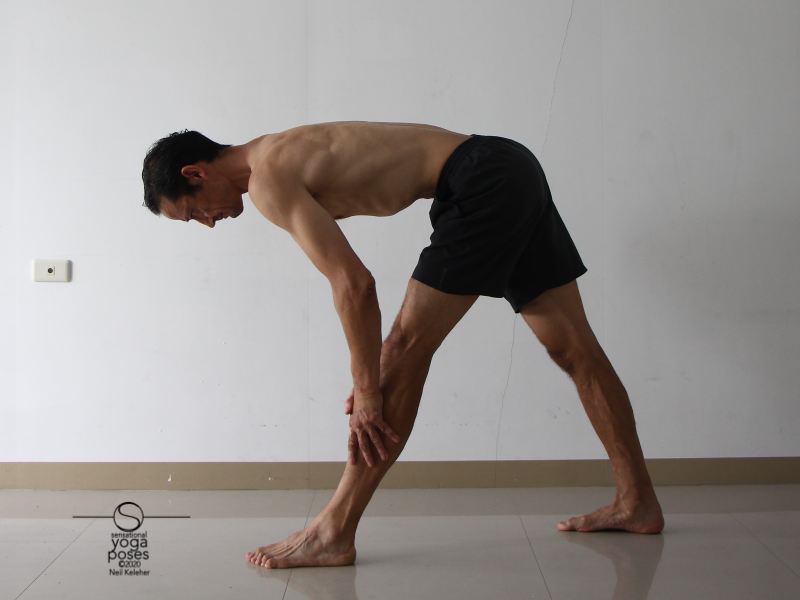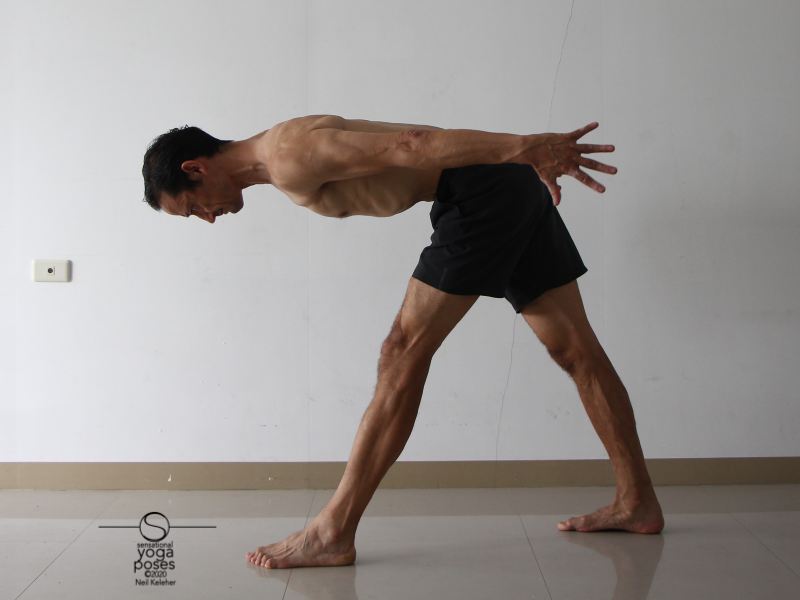Pyramid Pose Standing Hamstring Stretch
Muscle control options for effectively stretching your hamstrings
Pyramid pose is a straight knee asymmetrical standing pose with one leg forwards and the other leg back. Both feet are flat on the floor and the torso is bent forwards over the forward leg.
Pyramid pose can be used to stretch, and strengthen, the hamstrings.
The leg position from Reverse prayer and Twisting triangle
The leg position used in pyramid pose is more or less the same leg position used for Reverse prayer (parsvotanasana) and also for Twisting triangle (parivrtta trikonasana).
With pyramid pose you can rest your hands on your front leg, the floor, (or yoga blocks or a chair).
But you can also lift your hands so that your arms aren’t supporting your torso. You can also reach the arms forwards.
You can also turn the pose easily into Reverse prayer (parsvotanasana), or grab the hands behind your back and reaching your arms upwards (dwikonasana arm position aka the arm position from prasaritta padotanasana C).
You can also easily go from pyramid pose into revolving triangle pose (parivrtta trikonasana).
One approach to stretching the hamstrings
In order to stretch the hamstrings, one approach is to place your hands on your shin or on the floor (you can also place them on yoga blocks or a chair) so that you can relax your hamstrings. You can then try to lift your hands while keeping your hamstrings relaxed.
Lift your hands in this context means lifting your hands just clear of your shin (or the chair or the floor). Once lifted, your hands and arms can no longer support the weight of your body.
If you relax your hands and then lift your hands slowly, you should find that your torso sinks down. And then it stops. At this point, put your hands down again and let your hamstrings relax in this new lower position. Repeat the process a few times.
You may find that your torso sinks down just by relaxing your hands. In this case you might not even have to lift your hands. Just relax them, then re-activate them whenever your hamstrings re-engage.
A more active approach to stretching the hamstrings
Another option is to activate your hamstrings with your hands supporting your body weight. And then from there slowly lift your hands while keeping your hamstrings activated.
An option when lifting your hands is to subsequently reach them back.
This reduces the load that your hamstrings have to support.
In this case, as you lift your hands, work at keeping your torso stationary. Prevent it from sinking down. Then, once you put your hands on your shin (or the chair), then relax your hamstrings, then let your torso sink down.
Practicing a flexible mindset
I generally experiment with a lot of options when improving flexibility. One of the main reasons is that while a particular action will work on one day (or with one group of students) it won’t work the next day.
And actually, you could think of this as an extension of flexibility, being able to do the same thing in different ways, i.e. with different muscle activations.
Activating your hip suspension system in pyramid pose
So another option when doing pyramid pose is to activate the hip joint suspension system. You can think of this system, when active, as helping to center the hip joint and keep it centered.
In pyramid pose you can activate this system by pushing the front foot forwards, away from the hip. It can feel like you are pushing your hip bone back.
But resist the hip bone pushing back. You should be able to notice a change in sensation around your hip joint, some slight muscular activation.
Once you get a feel for this activation, work at doing it with minimal effort. This will require greater senstivity and focus.
With practice in feeling your hip joint you can begin to feel when it is centered. Applying this in pyramid pose, you can activate hip suspension of your front leg while standing. Then bend forwards slowly while keeping it active.
You can activate hip suspension for your rear leg also, or stay focused on your front leg.
You can rest your hands on your leg or the floor and relax your hip suspension. Then reactivate it prior to lifting your hands. As you get more practice with it you can work at keeping it active for the duration of the pose whether your hands are lifted or not.
You can adjust hip suspension “feel” by rotating the knee slightly inwards or outwards. (The whole leg rotates together when the knee is straight. Your arch will lift as you externally rotate and flatten as you internally rotate.)
Keep your hip suspenseion active while standing back up again also.
Preventing hip popping while standing
While standing back up, you stay focused on your hip, and if you are susceptible to hip popping, pause or stop at any point when coming out of the pose and adjust leg rotation to see if that helps prevent hip popping.
You may find that keeping your hip suspension system active makes it easier to increase your forward bend and stretch your hamstrings.
Heel stiffening to anchor the hamstrings
Another action you can do in pyramid is stiffening your heels. In general this should result in your ankles stiffening or activating also. When stiffening the heel of the front foot in pyramid pose, you may also get more noticeable calf activation or activation of lower leg muscles in general.
To adjust the feel of heel activation, you can again try rotating your knee inwards or outwards a slight amount.
You could focus on activating the heel of just the front leg, or add the back foot as well. In either case, activate while upright, and then work at keeping your heels active while bending forwards.
While heel activation can help to anchor the hamstrings and other knee crossing muscles from below, activating hip suspension helps to anchor the hamstrings and other hip crossing muscles from above.
Published: 2022 05 13
